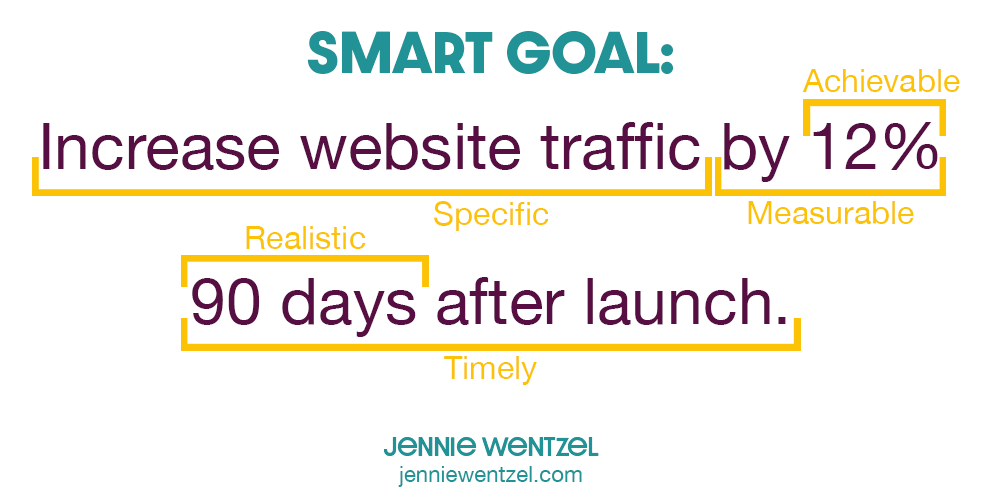[FREE Worksheet] Four Things to Consider Before You Rebrand Your Small Business
When you think of your small business’ brand or identity, what do you think of? Do you think of your name and logo? Do you think of the sign in front of your storefront or office?
In truth, your “brand” is so much more than this! Think of your brand as the personality of your business. It’s about how you relate to your customers, and how they feel about your business. It’s about how you stand out from your competition. It’s even about how your employees feel about working for your business.
A rebranding campaign is (and should be) more than just a new logo, location, or name. Although all of these things may play a role in your rebrand, there are plenty of other things to acknowledge and plan if you think you’d like to give your company a bit of a “facelift”.
Start here: Why do you want to rebrand?
There are plenty of reasons why you might be thinking about rebranding. Here are some ways your small business might benefit from a rebrand:
You’ve been in business for a long time, but sales are more recently dwindling. This is an indication that your brand could use a refresh or—as I said before—a bit of a “facelift”. This is especially true if you first opened your doors over 5 or 6 years ago. Sales may be decreasing for a number of different reasons, but one thing that can grab the attention of your target audience again is a new look and feel.
Your business has evolved and you’d like your brand to match. Is your business offering something new or different than it was when you first opened? Maybe you’ve slowly made some changes to your customer-facing processes and feel that your current branding should catch up.
You’d like to better differentiate from your competition. If you notice more potential customers choosing your competitor(s) over your business, think about why. A rebrand may help you better stand out as a better option to those potential customers.
You’re making another massive change to your business. If you’re moving locations or introducing a new product or service, a rebrand can help you make an even bigger splash with that campaign.
You’d like to reach a new audience. If you’ve already captured the attention of a particular target audience and would like to expand, a rebrand can make your business more appealing to a new type of audience, like Gen Z.
Understanding your specific reason for a rebrand will help you create a campaign that makes the most sense for your business and goals.
What are your goals?
Any successful campaign starts with setting SMART goals, because otherwise, how would you know if it was successful? You may remember me talking about SMART goals in my previous post about building a product launch campaign. If not, here is a bit of a refresher.
Remember why you chose to rebrand in the first place, and write down goals that are specific, measurable, achievable, realistic, and timely.
After the launch of your rebranding campaign, track the success based on these goals that you’ve written down.
How will this rebrand tie in with your mission statement?
Keep your rebranding true to your original mission and values. How will this help you accomplish the vision you had in mind when you first started on this adventure?
Moreover, if you think that your original mission has changed, make sure to identify and communicate your new mission statement to both your customers and employees.
Having a clearly communicated mission statement helps boost employee engagement. According to a report by Deloitte, 73% of employees that work at a “purpose-driven” company are engaged, compared to only 23% of employees that don’t work at a company with a clear purpose and mission.
A more engaged workforce leads to more productivity and ultimately, better customer service. It’s a win-win for everyone!
Photo by Patrik Michalicka on Unsplash
Why should your customers care?
Speaking of your customers, how will you get them bought into this rebrand? Are there other changes that will improve their experience that you can launch with your campaign? How can a new brand identity help make their lives easier? After all, the goal here should be to convert more sales and maybe even make your customers so pleased that they turn into vocal advocates for your business!
Here are some ideas to get your customers excited for your new brand identity:
Launch a new, more streamlined website that your customers can use to buy your products or book your services.
Introduce a new program that can help them save money, such as a rewards program, referral program, or a recycling program.
Start using supplies or processes that are more environmentally friendly—think recycled packaging or a “go paperless” option for statements and invoices.
Boost engagement and hype on social media by hosting a giveaway or contest related to your upcoming launch.
Remember, your rebrand is more than just a new look and feel; it should be something that truly improves the customer experience, drives employee engagement, and helps you achieve your vision for your small business.
Now that you’ve put some thought into these things, it’s time to plan and launch your rebranding campaign! I have found it’s best to collaborate with your teammates on projects like this because not only does it help them feel more bought in, you can get some great ideas and new perspectives on the direction to head in.
Take a look at my free rebranding worksheet that will help you get started on the right track.







Hi! I’m Jennie.
Thank you for visiting my blog! I write about marketing tips for small businesses and how to succeed as a female professional. I write from experience about the things that I love.